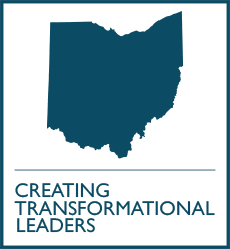Dec 14

Victoria Wobser: On the Fast Track to a Family Medicine Career
In Clyde, Ohio, your choices of physicians are limited. This rural area of Sandusky County, near the Ohio Turnpike, is designated as underserved – a call that Victoria Wobser would agree is accurate. When her mom needs to see an endocrinologist, she has just a couple of choices. One involves a 30-minute drive to Sandusky. Another requires a 60-minute trip to Toledo.
In a small community like Clyde, stigma could raise a person’s concern about having their car seen in the parking lot of a psychiatrist. “And a bad experience with one physician could stop someone from seeking help,” said Wobser.
Experiencing the shortage of care in her community fueled Wobser’s drive to become a family medicine physician. “I like the broad scope of the practice. I also like the chance to build long-term relationships and be a part of the community,” she said.
As a second-year College of Medicine student, she is enrolled in both the Rural Medicine Education (RMED) Pathway Program and the Accelerated Family Medicine Track (AFMT). Through the latter, this first-generation college student will be able to finish medical school in three years instead of the usual four. After completion, graduates of the AFMT enter a family medicine residency program at a NEOMED-affiliated hospital.
Wobser is the first student in the Accelerated Family Medicine Track.
“I saw it as kind of front-loading my stress at the beginning of medical school,” joked Wobser during a Zoom call. (How to pronounce her last name? Whoopser, as if you just ran into someone and said “Whoops,” she said.) With her Jack Russell terrier and Doberman nearby, she was taking a break from studying for an exam. With everything online, she recently went home to Clyde so she can enjoy the company of her parents now through the holiday break (ending Jan. 3, 2021).
With her parents’ help, Wobser has been fixing up a house she bought in Cuyahoga Falls earlier this year – about 10 minutes away from the place where she’ll be spending a lot of time over the next few years: Summa Akron City Hospital. (More on that later.) “I’m trying to bring my house into the 21st century,” she said, crediting her parents with helping her learn.
Classes for the first two years of the accelerated program are like those for students enrolled in the standard four-year College of Medicine program, but Wobser got a jump on things by taking two classes – quality improvement and social determinants of health – the summer after her first year. She also worked over the summer at the Family Medicine Clinic at Akron City Hospital, serving six weeks in outpatient services and two weeks in the inpatient clinic.
“I got to see some newborn babies!” she said, beaming. Wobser started out shadowing other physicians, then moved on to participating in exams and talking with patients. She said she learned a few tricks of the trade about the best ways to phrase questions: Don’t ask a patient if they are taking their medicine regularly, since they might say yes, but that could mean they take a daily medicine regularly – once a week. Instead, she learned to ask, “How often do you miss a dose?”
And when patients with hypertension call in with their blood pressure readings, she learned to ask them what kind of cuffs they used to take the reading. “Wrist BP cuffs are popular right now but not very accurate,” she said.
Having the chance to interview actual patients is something every first-year medical students looks forward to doing, and Wobser said a highlight was having the chance “to be present with the patients and just really listen to them.”
Wobser enjoys case-based learning, which she has experienced through presentations given by a visiting physician for the Family Medicine Interest Group at NEOMED. These sessions, such as one on the differences in how heart attacks typically present themselves in men compared with women, allow her to connect her classwork to the practice of medicine, she said. “They help me keep my mind on my end goal: helping people.”
What’s different about the AFMT curriculum? As was said before, Wobser completed a few M4 requirements during the summer between her first and second year, in an eight-week Primary Care Delivery Systems course specially made for AFMT. In Wobser’s third year, she’ll have an accelerated clinical year that allows her to complete all requirements necessary for graduation. After she graduates at the end of her third year, she’ll still have one rotation to finish – but that’s a small sacrifice for finishing early and entering a specialty she loves.
One significant benefit to being a student on the accelerated track (in addition to three years of tuition instead of four): Wobser doesn’t have to wait until her fourth year or to go through the extensive preparations for the national match program that places students in residencies. She already knows that her residency will be at Summa Akron City Hospital, where she credits the family medicine team at Summa – particularly Brooke Babyak, M.D. – with being especially supportive.
Wobser said an another bonus of being in the AFMT and the RMED program is the mentoring from faculty members Mike Appleman, director of primary care education and associate director of the Integrated Pathway programs at NEOMED, and David Sperling, M.D. (’85), director of the AFMT.
“It’s really nice to have extra support from Mike Appleman and Dr. Sperling,” she said. “Everything they do is focused on making sure I succeed.”

